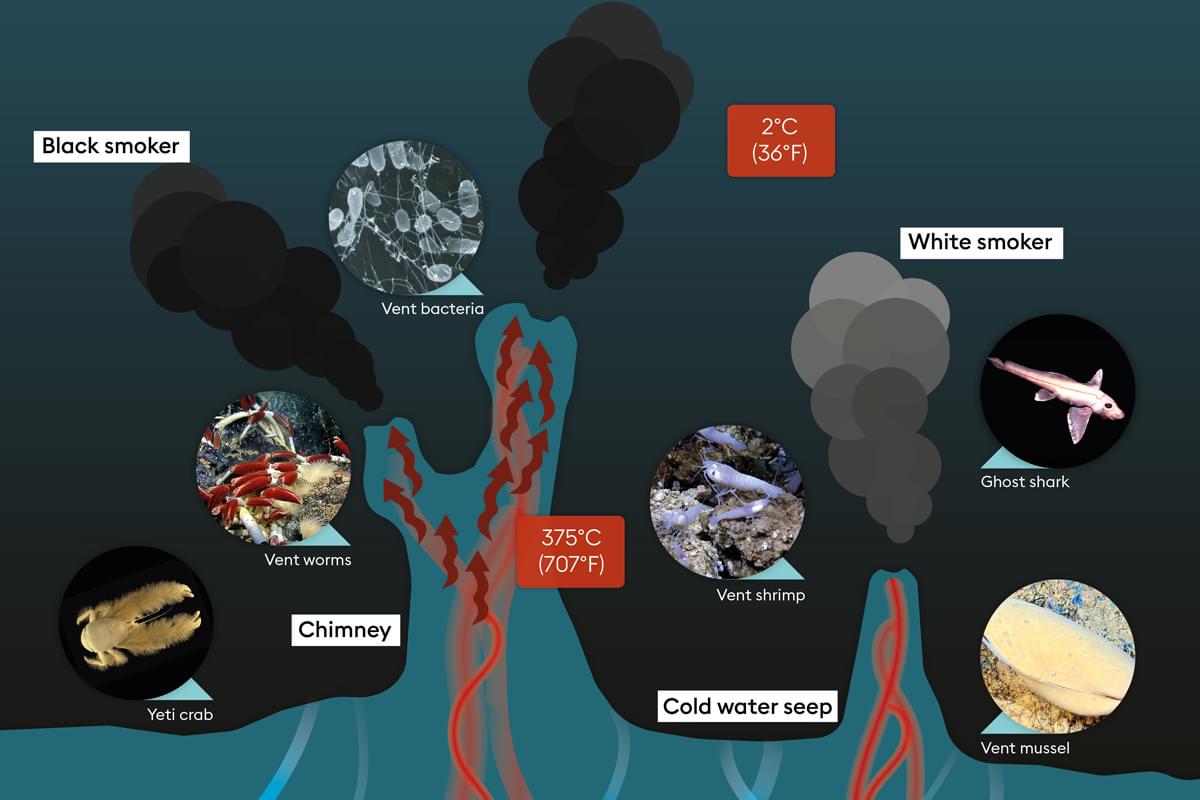Where does energy come from in the deep sea?
 Vent bacteria (NOAA), Yeti crab (A. Fifis, Ifremer/ChEss, Census of Marine Life), Giant tube worm (NOAA), Vent mussel (NOAA), Vent shrimp (NOAA), Ghost shark (NOAA)
Vent bacteria (NOAA), Yeti crab (A. Fifis, Ifremer/ChEss, Census of Marine Life), Giant tube worm (NOAA), Vent mussel (NOAA), Vent shrimp (NOAA), Ghost shark (NOAA)
Most life on earth uses the sun as its power source. Trees and plants use the energy in sunlight to combine water and carbon dioxide to make sugars, providing food for all different animals, including humans. This process is called photosynthesis. In the deep ocean, many hundreds of meters away from the sun's rays, another process is taking place: chemosynthesis. Tiny microbes use chemical energy instead of light to combine water and carbon dioxide to make sugar.
This chemical energy develops because of water that has seeped through the seafloor and is super-heated by the hot molten rock beneath the Earth's crust. Different chemicals and metals dissolve in this hot water, with temperatures nearing 400 °C (752 °F). This chemical mixture rises through chimneys and reacts in the cold, oxygen-rich seawater creating the energy needed for life.

